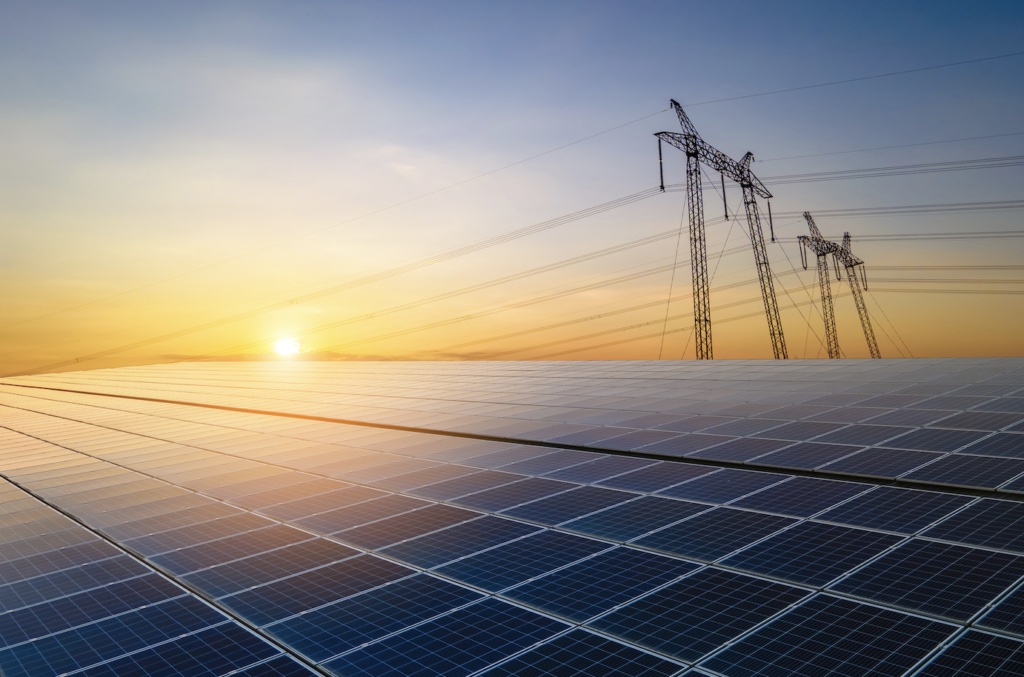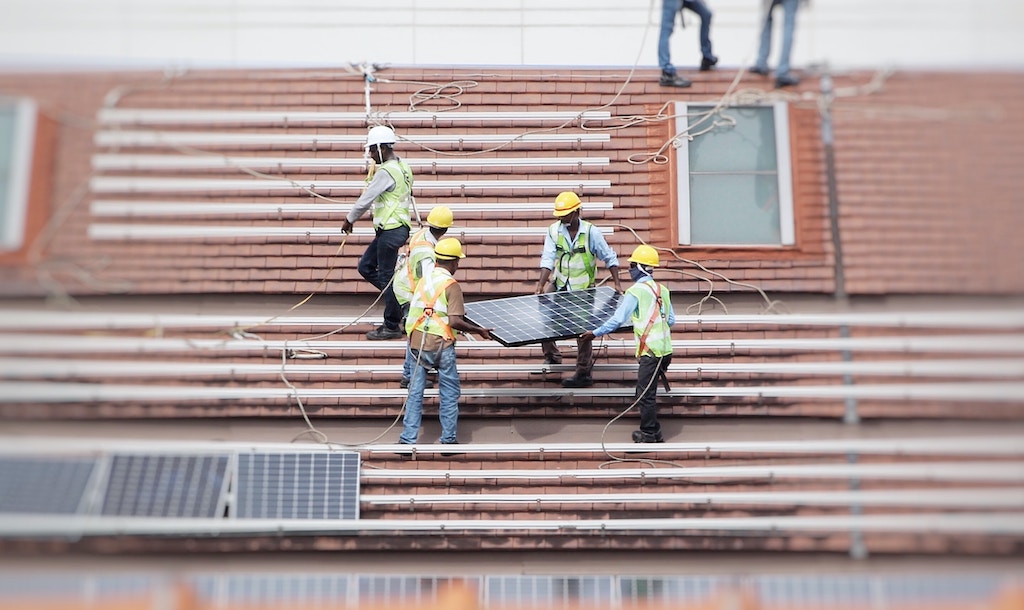
14 Nov #PowerTracker digs deeper into Mpumalanga renewables
Next month the team will start work on the project’s second year in SA’s energy heartland, continuing to track and investigate the energy transition, reports Roxanne Joseph

Renewables revolution: South Africa’s Mpumalanga province will continue to be the focus of the #PowerTracker map and ongoing investigations. Photo: bilanol/Adobe
After liberating data and publishing a series of hard-hitting, compelling investigations that focus on tracking financial flows of renewable energy projects in Mpumalanga, #PowerTracker is getting ready to kick off for another year.
With a whole new set of investigations planned, we will continue to track new and existing renewable energy projects in the province, as well as keeping users up-to-date with plans to decommission its coal-fired power stations.
But, before moving forward, the team behind it all takes a look back at what this powerful platform has achieved thus far, and at some of the lessons learned along the way.
#PowerTracker investigations cover a range of different impacts – such as consequences to labour rights, the coal lobby’s pushback, the risk of stranded assets, training and community support, and the country’s power crisis – that the radical green shift will have on Africa’s third largest economy.
They also have an accountability focus on how local authorities are implementing the Just Energy Transition plan. The project demonstrated that without journalistic interrogation, the renewables revolution in South Africa could become another vehicle for bureaucracy, broken promises, and potential corruption.
Mapping and tracking: The #PowerTracker digital mapping tool offers users a unique experience, where they can filter the data to see the information that interests them most
Starting from scratch
It was because of this level of scrutiny that Oxpeckers had to create a dataset entirely from scratch.
We looked to sources such as the Department of Forestry, Fisheries and the Environment, the SA Renewable Energy EIA Application database, Eskom, Mpumalanga Green Cluster Agency, Trade and Industrial Policy Strategies, the National Energy Regulator, the Department of Mineral Resources and Energy, and individual power companies.
In some cases, the information we needed was available, but had to be cleaned up and collated into a single place. Most of the time, we had to dig deep to get what we needed.
Limited data was available from official sources (see: Rating SA’s transparency on clean energy), so we relied heavily on field interviews with local stakeholders, community members and project developers, as a starting point. We gathered information such as project capaties, locations, technology used, development status, and expected impacts. The next step was to take this to the entities behind Mpumalanga’s new energy projects, where we verified the data and made sure that it was up-to-date.
In the background, we were also gathering historical energy production and environmental impact data, in order to provide a holistic view of renewable energy in the province.
By the time we published our digital mapping tool in October 2023, we had collected, cleaned and analysed data on more than 100 individual projects and 12 coal-fired power stations. With the upcoming Bid Window Seven of the government’s renewables programme scheduled to be released in December 2023, we will continue to monitor and update the dataset, reflecting the dynamic nature of renewables and their contribution to sustainable energy generation in Mpumalanga.

Community voices: #PowerTracker journalists made several trips out to Mpumalanga, where they met with local stakeholders, including Pascaline Mazibuko, who is against the phasing out of coal mining in the area. Photo: Ashraf Hendricks
Community engagement is key
We also found that what helped to set our reporting apart was the time spent in affected communities, including those in Ermelo, Hendrina, Middelburg and Emalahleni. This is where and how we identified a major gap in green skills (see: Mind the (green skills) gap), and also highlighted how little engagement people felt was taking place between national and local government, and residents themselves.
Given that this is a transition centred on a “just” outcome, obtaining the perspectives and inputs of the people in the trenches has always been vital to ensuring equitability. As the Just Energy Transition unfolds, it is crucial to address the social and economic challenges faced by these affected communities, who are experiencing job displacement and other disruptions.
For some of these coal-dependent communities, the whole process has been surrounded by fear and worry about how it will unfold, and whether a shift to new energy sources will sustain them or if they will simply be left behind (see: Left in the dust for a greener future).
In Ermelo, for example, almost 80% of its income-generating residents are employed at Eskom and Transnet. By actively involving them in decision-making and helping their voices to be heard, it is possible to develop policies that prioritise their well-being, ensuring a transition that is not only green but also socially responsible.
Additionally, the experiences and knowledge of these communities provided our reporting with valuable insights and possible solutions to overcome the specific challenges they face.

Early in the game: With South Africa only in its initial stages of the JET plan, information on funding for renewables is few and far between. Photo: Justin Lim/Unsplash
Tracking financial flows
One of our main goals with #PowerTracker has been to track financial flows in renewable power generation and the planned decommissioning of the various coal plants across the province. From the get-go we were challenged, not only because of how complex the energy sector is, but also because of how little information was out there.
South Africa’s renewable energy involves a diverse set of funding sources, including government subsidies, private investments, international aid and loans from financial institutions (see: Pledges roll in for SA’s energy transition for details). Often, it is difficult to establish a clear financial trail.
We have worked tirelessly to extract what little information was available at this early stage in the JET, and created a robust system for tracking finances. By implementing this system through interviews, data analysis and desktop research, we have been able to discern that while billions have been invested so far, Mpumalanga specifically has a long way to go when it comes to securing funding (see: #PowerTracker: Renewables are powering up in Mpumalanga).
The Just Energy Transition landscape in South Africa is a dynamic and ever-evolving one. The country is in the midst of a significant shift from a fossil fuel-dependent energy system to one that is more sustainable, renewable, and environmentally responsible.
Keeping up with these changes and developments is a challenging yet essential task, and is the main reason we created #PowerTracker in the first place. One of its key features is that users can subscribe to receive updates, which are monitored on a regular basis.
You can find an easy tutorial on How to use #PowerTracker here
Spend some time digging into #PowerTracker data here
Roxanne Joseph is project manager at the Oxpeckers #PowerTracker project, which is supported by the African Climate Foundation’s New Economy Campaigns Hub and the Centre for Investigative Journalism’s (CIJ) Open Climate Reporting Initiative (OCRI)
